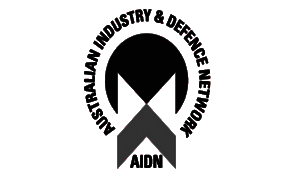
Blog
How to Meet the Challenge of Improving Workplace Relationships
When we think of improving relationships, we often think of our family and friends. But we usually spend more time with our colleagues during the week than anyone else. But there are many challenges associated with workplace relationships. After all, we get to choose our friends and partners—but have little say over who we work with.
The fact is—wherever you work and whatever position you hold, there will be situations that test workplace relationships.
The BBC reported that in the UK, people spent an average of 42.5 hours at work in 2019. That is an awful lot of time with colleagues. It’s one thing to enjoy your role when you’re working alone. But, it’s another to ensure that your working environment is a positive one. Working relationships are often more complex, combining friendships, romances, and even families.
Why Do We Experience Relationship Challenges in the Workplace?
A working environment develops in a short space of time. Also, bosses hire employees based on their skills, not solely on a friendly personality. We choose our friends, and although we don’t choose our family, the bonds become closer over the years. But in an office, new people come and go, which changes the dynamics.
Here’s the challenge with relationships in the workplace—managers choose employees but may not spend so much time with them. Employees don’t get to choose their coworkers but must work with them daily.

Secondly, there are two very different types of relationships in the workplace. Simply put, there is a relationship between a manager and an employee and then the relationship between two employees.
Most people will agree that a good boss will be firm but also fun. Of course, there can be a thin line between the two that may lead to problems.
For employee relationships, you might have an exceptional ability to work well together—still, you may have absolutely nothing in common. Or, your communication styles could be on opposite ends of the scales. And find it difficult to understand subtle messages the other person is sending.
To an extent, employees are accountable for relationships in the office. But mostly, it is down to management to set the example and teach methods that will help meet the challenges of keeping healthy relationships in the workplace.
How Can You Improve Workplace Relationships?
From an employee’s point of view, relationships will flow better when they learn the following three things:
- How to communicate effectively in the workplace
- To respect a wide range of different opinions and viewpoints
- To take their frustrations out of the office
This may seem like common sense. But for some, these skills don’t come naturally and will, therefore, have to be included in training sessions.

ing sessions.
[Picture: happy boss.jpg]
As a manager, here are some practices that will enhance both types of relationships in the workplace:
1. Be the role model
You will have to excel in communication and anger management so that employees learn from your example.
A great idea is to show your employees that you are willing to learn. Just because you are the boss doesn’t mean you know everything. When the team sees that you are eager to learn, they will too. It will then become more natural for them to respect alternative viewpoints.
2. Be the mediator
What may seem like a trivial conflict can quickly turn into a full-blown issue that affects the entire workplace. Perhaps Bob took Bill’s stapler—but now you can cut the atmosphere with a knife. In these situations, tiny frustrations have likely been building up. You need the skills to resolve conflicts as soon as they arise, and without taking sides.
3. Make sure roles and responsibilities are clearly defined
When there are product or service related issues, the ‘blame game’ can present relationship challenges. Someone blames the other for not being able to complete their part. Then this person blames another person, and so on.
To prevent friction when things go wrong, everybody’s role should be clearly defined from the beginning. This way, there is no room for employees to pass the buck, which often causes temperatures to rise.
4. The importance of ‘please’, ‘thank you’ and ‘I’m sorry’
The irony is that we insist our children use these three magic words. And, we expect our employees to say them to maintain workplace relationships. But managers tend to ignore their importance. You can lead by example by communicating with tact.
Your team members will have far more respect for you if you can say “sorry” when you messed up. In many cases, a sincere “thank you” is often more valuable than the paycheck itself. And by adding “please” with your requests, you show that you don’t abuse your role as boss.
5. Encourage social activities
After work drinks on a Friday or social activities are excellent ways for managers and employees to have fun and get to know each other better. Or, what about an “Escape Room” adventure to strengthen relationships and foster cooperation? These occasions are outside of the physical workplace. So it’s easier to engage with others and get to know another side of them. Of course, some employees aren’t up for socializing outside of work, and that’s okay.
Recent Posts
-
Working From Home — Ultimate Security Tips for a Safe Home Office
-
Unexpected Ways Stress Affects Your Body
-
The Worst Mistakes to Make When Working from Home
-
The Undeniable Worst Mistakes to Make in a Meeting
-
The Top 6 Myths About Leadership Debunked
-
The Best Apps for Busy Professionals
-
Is Telecommuting the Answer to Work-Life Balance?
-
The Importance of Career Goals to Boost Success at Work
-
The Shocking Dangers of Workplace Burnout
-
How to Restart Your Positive Emotions
























